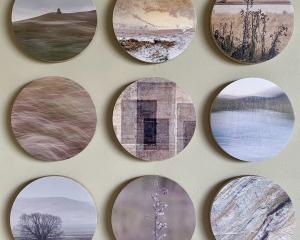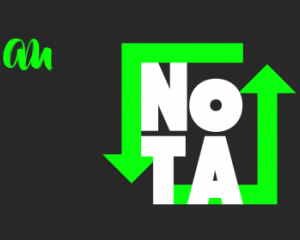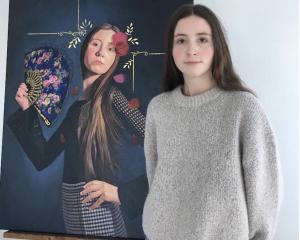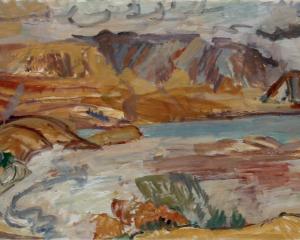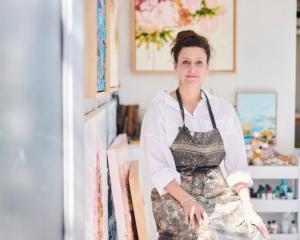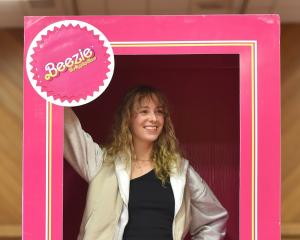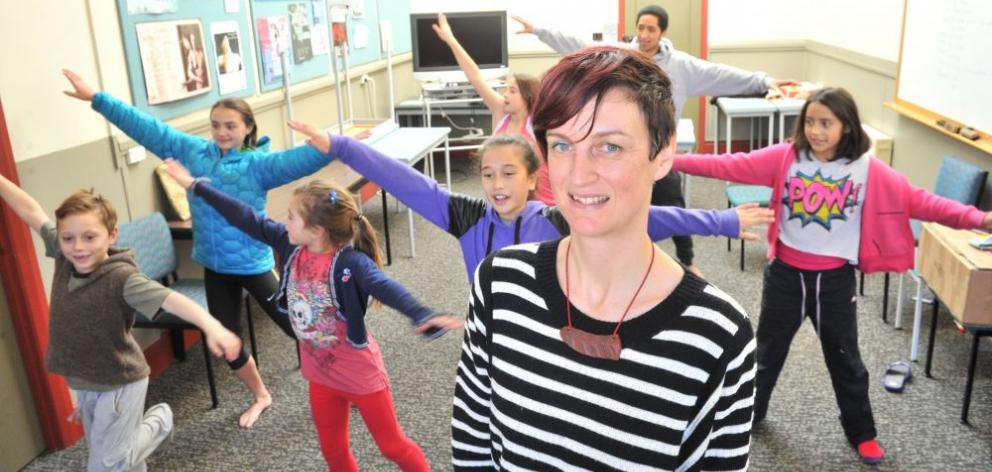
Many people are familiar with the All Blacks' haka, but there are other types of haka for all occasions, for women as well as men, Louise Potiki Bryant, 2014 Caroline Plummer Fellow at the University of Otago, tells Charmian Smith.
Inspired by forgotten forms of dance and entertainment, Louise Potiki Bryant, 2014 Caroline Plummer Fellow in Community Dance at the University of Otago has been working on a project that culminates in a performance at Toitu Otago Settlers Museum during the Puaka Matariki midwinter festival.
Her project, Whakaahua: coming to form, draws on research into whare tapere, traditional houses of entertainment, by Te Ahukaramu Charles Royal, director of Nga Pae o te Maramatanga, and professor of indigenous development at the University of Auckland.
Whare tapere were places where stories were told, games played and dancing and puppet shows performed, but they fell out of use during colonisation, she said.
Although she has been living and working in Auckland since 1997, she says the fellowship has been a wonderful opportunity to return to her home town, Dunedin, to work with her own hapu to create dance.
She feels more connected down here, she says.
Growing up in Dunedin, she identified with Ngai Tahu and learned kapa haka at Araiteuru marae, which her Great-aunt Emma Potiki Grooby was involved in developing.
She studied law and Maori studies at Otago University in the 1990s, then in her third year took some choreography papers and fell in love with it.
As a child she had learned ballet and gymnastics, but it was attending a tertiary dance festival in Wellington in the mid-1990s that set her on her career path as a dancer, choreographer and video artist.
''I saw Jack Gray and Dolina Whipeihana and Justine Hohaia and was blown away by the Unitech dancers. I wanted to train there and so ended up going there and training in performing arts, majoring in contemporary dance. After that Jack got Dolina, Justine and myself together and we created Atamira Contemporary Dance Company in 2000,'' she said.
Since then she has been based in Auckland and for 11 years choreographed and danced with Atamira, collaborating with other visual artists and musicians, including Dr Richard Nunns, an expert in traditional Maori instruments, and Paerau Corneal, a clay artist.
''That put my work into a whole new realm. We created a work called Kiri [skin] where she covered me in white clay. I begin the piece in white clay, which is the oldest in terms of the whakapapa of clay, the oldest form of clay, and partway through she covered me in red clay referencing Hineahuone, the first woman, who was made of red clay.''
Bryant says Maori dance ranges from traditional haka to a huge diversity of contemporary Maori dance, but for her a special element of Maori performance is dancing from the spirit as well as the body.
''It's quite holistic. You bring all parts of yourself to dance. I couldn't say that's different from other types of dance, but it's something I know about in terms of Maori dancers. We try to dance from our wairua [spirit] as well as our tinana [body] and our hinengaro [intellect, mind],'' she said.
''The other important aspect is what we are communicating. It's about the communication of ideas and also connecting with our family, our whanau, so it's all about those connections with the wider community as well as ourselves.''
With Prof Royal she has also been developing nohopuku, a meditation practice to reflect inwardly.
It was used in the whare wananga, the schools of learning, she said.
She also practises and teaches yoga; learning about breath, meditation and different layers of the self informs her dance practice, she said.
In her project, Whakaahua - Coming to form - whakaahua means to transform or become something, she says - she is working with hapu from Otakou marae and with university students.
It is based on dance that was performed in the historical whare tapere, which tended to be about our relationship with nature.
''Often in the haka the idea was you took on this element from nature or the qualities of a particular atua or deity, and that becomes manifest in your body as you perform the haka.
These haka are not so much about assertion of identity but about a relationship with the land and people.''
The atua that relate to male and female dance are Tanerohe and Hineruhi, she said.
''Hineruhi is the light that dances on the early morning dew and she is the atua or deity of feminine dance and Tanerohe is the heat that rises from the earth on a hot summer's day. These two atua are central to the practice I've been sharing with local hapu.''
She is not trying to revive historical dances from the whare tapere as there are only fragments of information, but, like many artists around the country, she has been inspired by Prof Royal's research about what went on there, she said.
''You must be carried away by the spirit of joy and entertainment, so haka can be quite light-hearted. One of the things Charles wanted to do was to show other types of haka and look at feminine aspects of our dance as well as the masculine.
''Charles spoke to me about how haka means to dance and haka can be about any emotion. There are very specific haka for specific purposes, some specifically for aggression or war.''
She has held two workshops at Otakou sharing games and dance and meditation practice, and in the city holds weekly classes for hapu and another for the public as part of her project, which will result in Te Motutapu-o-Tinerau, to be performed on June 21.
The performance is based on a Ngai Tahu version of the story Tinirau and Kae.
Tinirau, the tipuna (ancestor) of fish, paid the tohunga Kae for performing the baptismal rites on his newly born son with a piece of flesh of his pet whale Tutuni.
Although Tinirau is reluctant to allow him, Kae insists on riding Tutuni back to his home island and treacherously murders the whale and eats him.
The smell of whale meat cooking reaches Tinirau.
His wife Hineteiwaiwa convenes a troupe of women who go to Kae's island and dance in the whare tapere, aiming to get him to laugh so they can identify him by his double tooth.
It takes a while and their dance becomes more and more seductive.
Finally, when they stand on their heads and reveal themselves, he laughs.
They capture him and take him home where retribution is had, she says.
It includes a video Kia kawea tatu e te rehia - let us be taken by the spirit of joy of entertainment with a soundtrack by Mozart Fellow Jeremy Mayall as well as music by her husband and collaborator Paddy Free.
As most of the people in her project are women, it will be a performance of mana wahine, the power of women, she says.
The Caroline Plummer fellowship has provided a solid six-month opportunity to focus on one concept and idea, she said.
''It's given me a shift in what I think about dance. I really feel dance is for everyone.''
See it
Te Motutapu-o-Tinerau, a whanau dance performance devised by Louise Potiki Bryant in collaboration with Rua McCallum, will be performed at Toitu Otago Settlers Museum on June 21 at 8pm.

